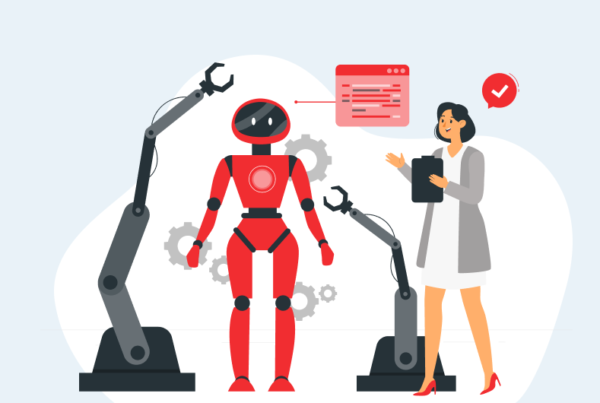
Resources > Blog > Managing Payroll Operations: In-House, Outsourced, or a Hybrid Approach?
Managing Payroll Operations: In-House, Outsourced, or a Hybrid Approach?
Published on Oct 14, 2023

For organisations expanding globally, payroll management becomes increasingly complex. Companies must disburse employee pay accurately and on time while remaining compliant with regulations that differ across countries.
HR departments must evaluate whether to run payroll in-house, fully outsource it, or use a hybrid model. What are the pros and cons of each approach, and how should companies determine what works best for their business?
Understanding Main Payroll Operation Models
In-House Payroll
Handling payroll entirely in-house means the company manages everything internally, including:
- Payroll and HRIS software and hosting
- Tax calculations for different countries
- Compliance with local reporting regulations
- Creating and sending payslips
- Payment execution and bank transfers
The main benefits of insourcing payroll include the following:
- Complete control over payroll processes, data, and systems
- Customisation to specific company pay rules and policies
- Development of internal expertise in payroll operations
- Oversight of data security and access controls
However, in-house payroll also requires the following:
- Significant HR and IT headcount to maintain infrastructure, tax logic, and execute processes
- Ongoing costs for software, hosting, maintenance, and internal payroll staff
- Upgrade projects as technology or regulations change
In-house payroll works best for large companies with complex global payroll needs and available resources to manage operations internally.
Fully Outsourced Payroll
At the other end of the spectrum, fully outsourcing payroll means a vendor takes responsibility for the following:
- Provisioning payroll software, updated for different countries
- Handling tax calculations, compliance, and reporting
- Creating and distributing pay slips
- Executing salary payments
- Providing customer service and support
Outsourcing can significantly reduce internal technology and staffing costs related to payroll. It also leverages vendor expertise in regulatory compliance.
However, potential downsides to outsourced payroll include:
- Less control over payroll processes and systems
- Reliance on the vendor for service quality and support
- Limited customisation to unique payroll policies
- Security and data privacy considerations
Outsourcing works well for smaller companies that want to minimise payroll administration headaches and don’t require heavy customisation.
Hybrid In-House and Outsourced Payroll
Rather than a binary choice between insourcing or outsourcing, many companies use a hybrid payroll model:
- Core payroll software and data managed in-house
- Critical functions like tax calculations and pay slip creation are done internally
- Supplementary payroll activities are outsourced
For example, a company could use SAP SuccessFactors to manage central payroll data and processes but outsource regulatory reporting and final salary payments to a vendor.
The hybrid approach helps balance:
- Control over critical payroll systems and processes
- Cost reduction through outsourcing administrative activities
- Flexibility to adjust insourcing vs. outsourcing
This can be ideal for mid-size companies that want to keep essential software in-house but need more specialists to handle all payroll operations. However, it does require close coordination between internal teams and the outsourcing provider.
Key Factors to Determine the Best Approach
Payroll Complexity and Customisation
Companies with complex payroll requirements, collective bargaining agreements, and needs for high customisation may benefit most from an in-house model using configurable software like SAP, Workday, or Oracle.
Standardised outsourced solutions may need more flexibility for intricate pay rules, unions, job levels, and allowances.
Available Internal Resources
Available HR and IT headcount and expertise are significant factors. Organisations must assess:
- Existing personnel available to maintain payroll systems and operations
- Ability to develop or hire internal skills if outsourcing
- Budget for additional headcount if keeping payroll in-house
Lean teams may prefer outsourcing rather than building capabilities internally.
Data Security and Compliance
For heavily regulated industries like financial services, keeping payroll systems and data in-house may be preferable to reliance on vendors.
Thorough due diligence of outsourcer security protocols, controls, and compliance certifications is essential.
Cost Considerations
While outsourcing reduces HR headcount and software capital expenses, vendor service fees increase over a contract term. Hidden costs may emerge for customisation and add-ons.
Modelling the total cost of ownership over 3-5 years for on-premise vs. outsourced options is recommended.
Upskilling Internal Teams
If outsourcing, companies should still look to train some internal personnel on payroll operations for oversight. If insourcing, consider employing specialists experienced in global payroll platforms.
No Universal Best Approach
The payroll operations decision ultimately depends on factors unique to each company’s business situation. There is no universally best approach.
Both HR and IT should be involved to align priorities like cost, control, and capabilities. As the business grows globally, requirements may shift – so regular reevaluation of the optimal model is recommended.
With the right strategy, organisations can effectively manage multi-country payrolls and remain compliant without becoming overwhelmed.







Share with your network
Get updates in your inbox